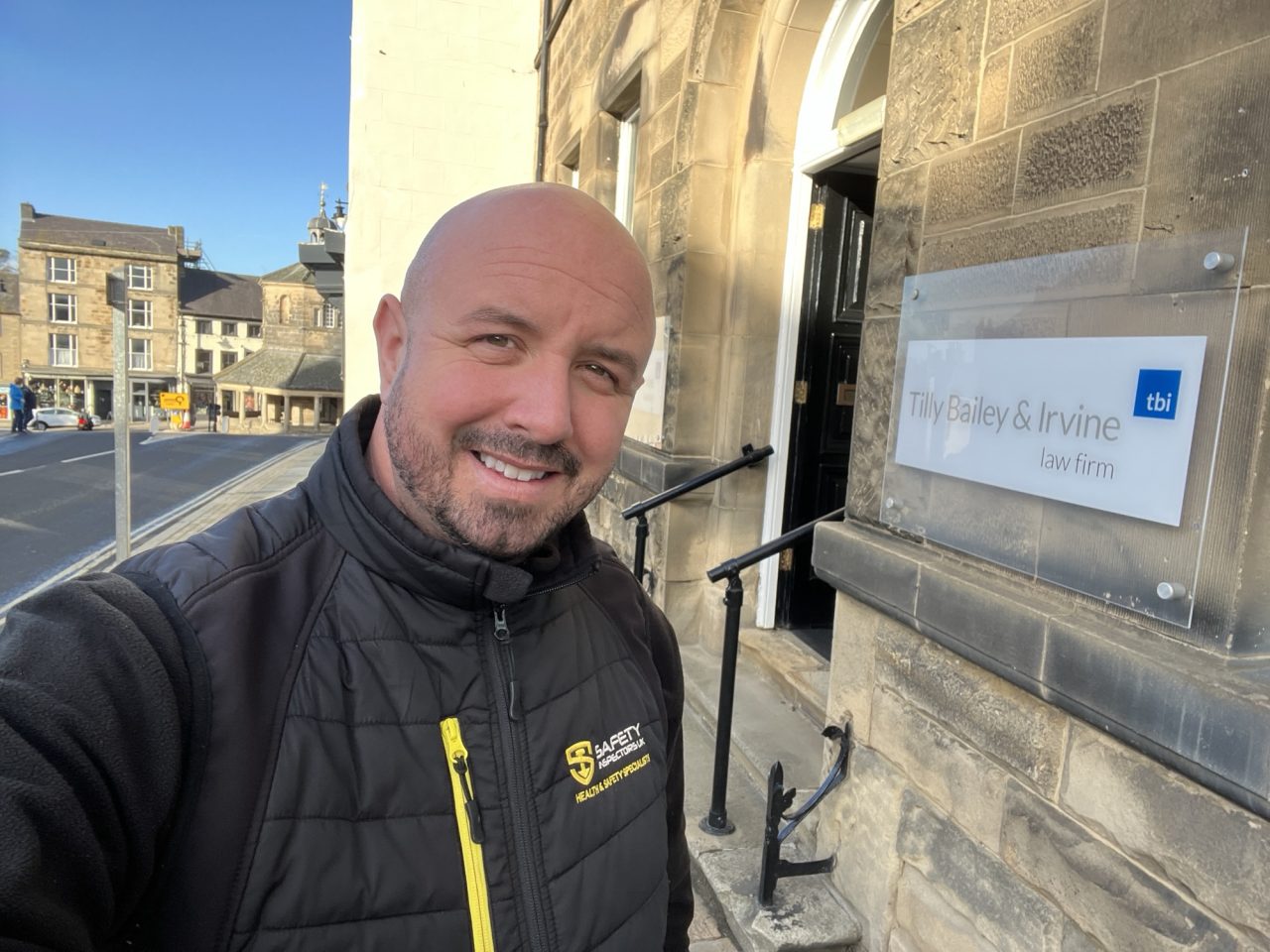How Tilly Bailey & Irvine LLP and Safety Inspectors UK Ltd are raising safety benchmarks in the legal sector
When a leading legal practice like Tilly Bailey & Irvine (TBI) decides to raise the bar on its health & safety regime, it makes a statement. This week, Safety Inspectors UK Ltd visited TBI’s Barnard Castle and Wynyard offices to deliver a comprehensive building scan, asset-plotting exercise and critical safety-date capture. We’re proud to be working in partnership with TBI to enhance their existing safety standards—and this blog explains why this matters, what we did, and the benefits for everybody working in and visiting their offices.
Why law firms need robust health & safety
Law firms may appear low-risk compared to heavy industry, but in fact a modern legal office is a complex environment where health & safety, fire-safety, building maintenance, visitor management and equipment compliance all intersect. For a firm like TBI, with multiple offices (including Barnard Castle and Wynyard) and a large staff footprint, ensuring safety-asset management and timely maintenance is vital. Not only does it reduce risk to people, but it also supports business continuity, regulatory compliance and the firm’s reputation.
Given TBI’s reputation as one of the UK’s leading personal injury and clinical-negligence law firms with regional offices across Hartlepool, Barnard Castle, Wynyard, Stockton and Sunderland, managing risks in the physical workplace complements their external safety-focus.
The partnership: Safety Inspectors UK + TBI
By working together, Safety Inspectors UK and Tilly Bailey & Irvine have combined legal-sector awareness and professional services demands (from TBI) with practical safety-inspection expertise (from us). The core aims of the collaboration are:
To map and document all safety-critical assets (e.g., fire-doors, emergency lighting, alarm systems, PAT equipment, first-aid stations) across each site. To embed a digital asset register that captures the assets, their locations, installation dates, maintenance dates and next-due inspection/servicing dates. To perform a site-wide building scan, to identify structural, systems and asset issues (such as access-routes, fire-doors, signage, lighting levels) and flag any near-term actions. To schedule and save critical safety dates, so that TBI can proactively plan inspections, servicing, replacements and compliance-checks, rather than reacting only when something fails or a regulator visits. To deliver a clear safety-standard baseline report for TBI, giving them full visibility of their compliance posture across the Barnard Castle and Wynyard locations this week.
What we did this week at Barnard Castle & Wynyard offices
At both the Barnard Castle (“8 Newgate, Barnard Castle DL12 8NG”) and Wynyard (“12 Evolution, Wynyard Park, TS22 5TB”) sites, the Safety Inspectors UK team carried out the following:
Full-site walk-through (‘building scan’) – examining access routes, fire escapes, signage, emergency lighting, alarm panel locations, stairwells, corridors and general asset-condition. We noted any visible defects, missing labelling, or maintenance signs. Asset-plotting – physically locating, tagging and photographing each safety-critical asset, then entering it into our digital register. For example: fire-doors, emergency-lighting units, smoke/heat detectors, fire-alarm call-points, portable appliance testing (PAT) units, first-aid boxes. Date-capture and scheduling – for each asset we recorded installation dates (where known), last servicing dates, next-due inspection dates and any warranty / replacement-time-limits. We then saved these dates into TBI’s asset register with alert triggers ahead of due-dates. Baseline reporting – we produced a clear, actionable report for each office, highlighting: Assets in good order and on schedule Assets approaching due-inspection or end-of-life Minor issues to correct (e.g., signage missing, access-route light dimming) Major issues requiring more immediate attention or budget allocation. Hand-over meeting with TBI management – we met with TBI’s facilities/office-services team at each site to walk them through the findings, show the asset register tool, and explain how they can use it going forward (scheduling, reminders, budgeting).
Why this matters: tangible benefits for TBI
By undertaking this exercise now, TBI will benefit in multiple ways:
Enhanced compliance – Having all safety-assets logged, tracked and managed with dates means fewer surprises at inspection time and better alignment with regulatory expectations (fire safety, electrical safety, site safety). Risk reduction – Proactively identifying ageing assets, lighting issues or access-route defects reduces the potential for accidents, near-misses, or law-firm downtime. Cost-effective maintenance scheduling – By knowing next-due dates ahead of time, TBI can budget and plan maintenance rather than resorting to costly emergency call-outs. Reassurance for staff & visitors – A visible commitment to safety across the offices builds confidence among employees, clients and visitors—important for a legal practice that values its reputation. Streamlined asset-management – The digital register gives TBI one central source of truth for all their offices, making cross-site oversight simpler and more efficient. Business-continuity support – Safety-asset failures (e.g., emergency-lighting, alarms) can impact operations. Having control mitigates that risk.
Moving forward: our next steps with TBI
The work done this week is a strong foundational phase. As we proceed, our plans include:
Rolling out the same asset-mapping and building-scan approach to TBI’s other offices (e.g., Hartlepool, Stockton, Sunderland). Establishing quarterly reviews of the asset-register to ensure entries stay up to date and new installations/assets are added. Integrating automated reminder systems for inspection/service due-dates—thus moving from manual tracking to proactive alerts. Providing training or briefing sessions for TBI’s in-house facilities/office-services team on how to use the digital register, update entries and respond to asset-alerts. Producing annual safety-standards reports showing progress, actions taken and highlighting any recurring themes for improvement.
Why partner with Safety Inspectors UK?
At Safety Inspectors UK, we specialise in helping organisations embed robust safety-asset management, maintenance scheduling and building-scan services in a way that aligns with operational needs and compliance demands. Partnering with a forward-thinking firm like TBI demonstrates how professional-services organisations are recognising the value of proactive safety-asset management—not just because it is the right thing to do, but because it supports business resilience, reputation and employee confidence.
Conclusion
The collaboration between Tilly Bailey & Irvine and Safety Inspectors UK is a timely and strategic step. This week’s work at the Barnard Castle and Wynyard offices—covering building scans, asset-plotting and scheduling of critical safety dates—represents a major leap towards more robust, streamlined safety-asset management at TBI. For legal firms, ensuring the workplace is safe, well-maintained and compliant is increasingly recognised as an essential part of organisational governance.
If you’re responsible for facilities, safety or compliance in a multi-office professional practice and you’d like to learn how our building-scan and asset-register services can help your organisation, we’d love to talk.


